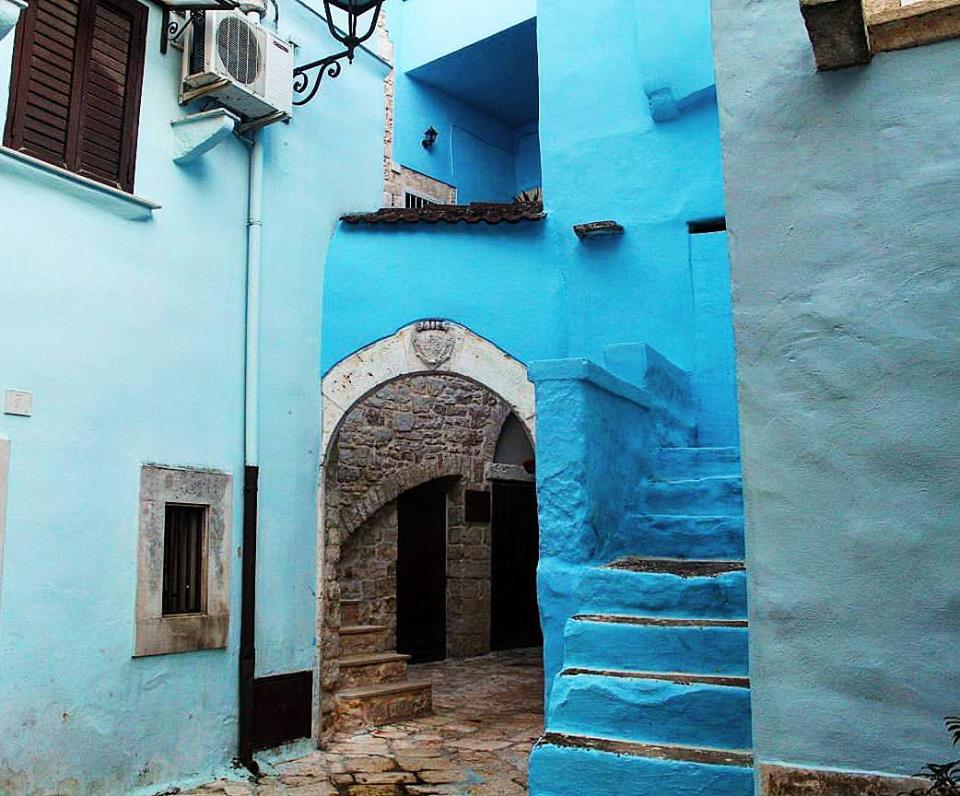Casamassima it is an extraordinary place. A small village out of time and space that everyone knows as "the blue country". Because here, a twenty-minute drive from Bari, the houses are just like that: blue. Pastel blue that looks like a fairy tale.
Casamassima, the story
Located at the foot of the Murge, Casamassima was founded by Quinto Fabio Massimo known as the Temporeggiatore during the Punic wars. It seems that his name means "a camp of the Massimo". The oldest document concerning the village is dated shortly after 960 and is a morgengabio (a document from the Lombard period with which a husband gave the bride part of his possessions the day after the wedding). Over the years, Casamassima suffered assaults and devastation, plague epidemics and changes of ownership. There is just there plague, at the origin of its color. When the epidemic reached Bari in 1658, killing over 20.000 people, Duke Odoardo Vaaz ordered the painting of houses and churches by adding blue to the quicklime. And the plague went away. Or, at least, that's what the legend says. L'blue it is in fact connected to the mantle of the Madonna, and to his saving action.

Then, in 1960, the Milanese painter Vittorio Viviani. That unique aspect of it conquered him, and he decided to set his canvases there, defining the village as "The blue country". A sort of little Chefchaouen, but in the south of Italy. A village full of treasures, flowers and pastel-colored walls, where walking is an (almost) surreal experience.
What to see in the village
Casamassima is full of buildings, all to be discovered. The most impressive of the entire historic center is the Monastery of Santa Chiara, founded in 1573 by Antonio Acquaviva d'Aragona. Initially used as an orphanage, it was a prison, school and home before becoming a Monastery of the Poor Clares. Also worth a visit there Mother Church of Santa Croce, with its thirteenth-century baptistery and the statue of San Rocco, and the Monacelle complex. The latter, also a former orphanage, housed the women's music conservatory (much appreciated by the Kingdom of Naples) and is now home to some municipal offices. Finally theAbbey of San Lorenzo, a splendid example of rural sacred architecture with frescoed ceilings and walls.

On the civil architecture front, the most iconic corners of Casamassima are Via Paliodoro and Chiasso Bongustai. Instagrammers and photo lovers this is where they come, for their unfiltered shots. Via Paliodoroin particular, it is the bluest street of the village with its old renovated peasant houses full of flowers. Chiasso Bongustai, on the other hand, housed the village oven. And, today, it's a splendid smurf-colored glimpse. There are actually a handful of buildings to see: Porta Orologio, Palazzo Amenduni, Palazzo Ducale Vaaz with its blue traces. Finally, the Arco delle Ombre which, according to legend, was a haunted house. When there was still no light, in fact, those who passed under it with candles in their hands created frightening shadows on the wall. Similar, in fact, to those of a ghost.
Featured photo taken from Wikipedia (credit Dentaek - CC BY-SA 4.0)





